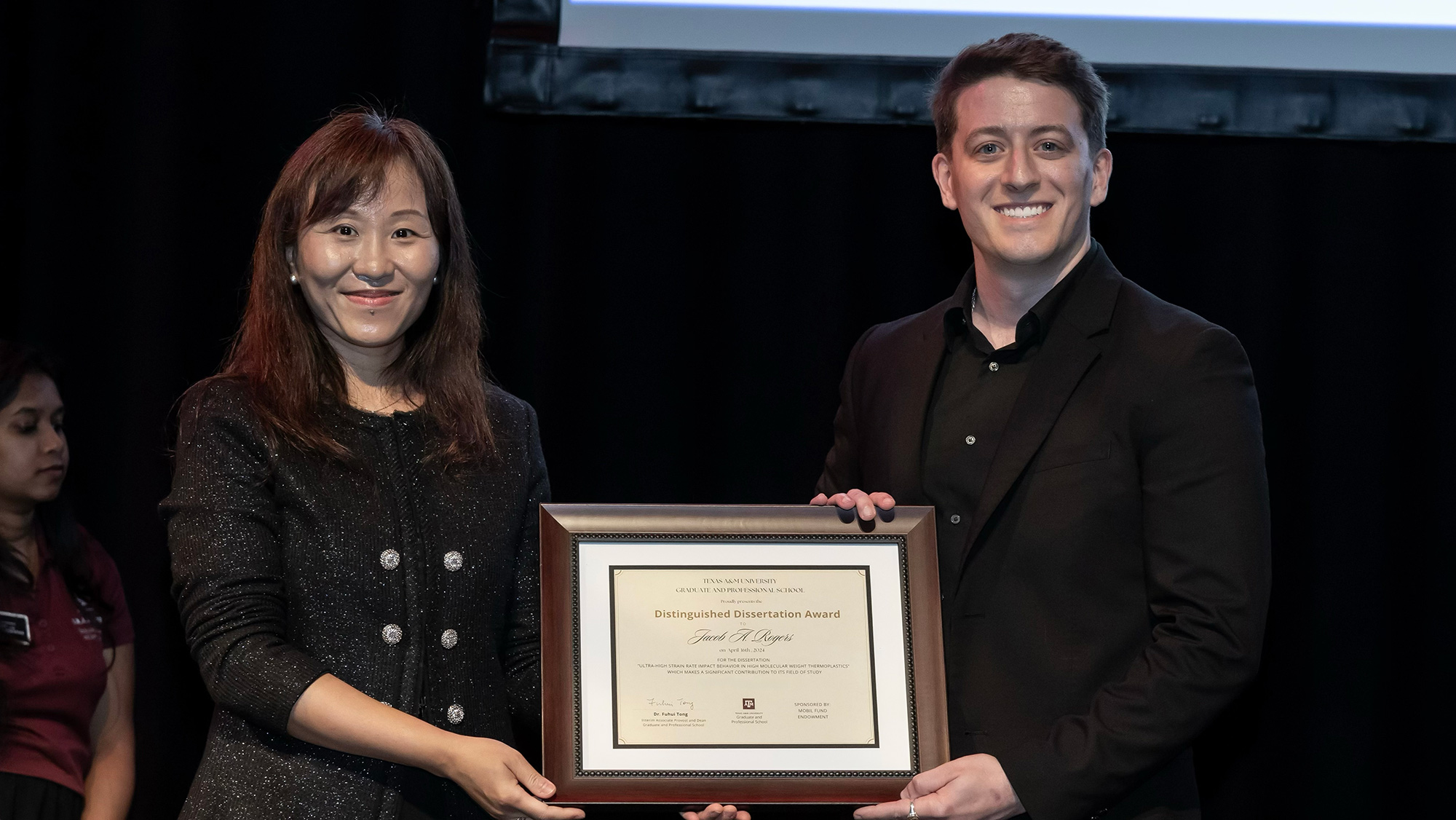
Jacob Rogers, a recent Ph.D. graduate from the J. Mike Walker ’66 Mechanical Engineering Department, has been awarded the 2024 Texas A&M Distinguished Dissertation Award in the Mathematics, Physical Sciences, and Engineering category.
“I am both grateful and humbled to be this year’s recipient of the Texas A&M University Distinguished Dissertation Award in Mathematics, Physical Sciences, and Engineering,” said Rogers. “This could not have been possible without the support of many friends, colleagues, mentors, and advisors.”
His dissertation, “Ultra-High Strain Rate Impact Behavior in High Molecular Weight Thermoplastics,” explores the deformation, failure, and energy absorption of common commercial thermoplastics when impacted at speeds up to 7,000 m/s (about 16,000 mph) and at scales as small as microns. His committee included Dr. Thomas Lacy, Jr. (chair), Dr. Justin Wilkerson (co-chair), Dr. Edwin Thomas, Dr. J.N. Reddy, Dr. Waruna Kulatilaka, Dr. Charles Pittman, and Dr. Brian Schuster.
Jacob's research tackles fundamental questions about the complex multi-physics phenomena occurring when polymers experience ultra-high strain rates and highlights the potential of threat-optimized, layered polymer protective structures for use in defense and space applications.
My hope is that this award underscores the importance of high-rate materials research, particularly with applications in national security, and draws attention to the researchers dedicated to advancing our understanding of dynamic material behavior and developing next-generation materials for extreme environments.
Additionally, he has played a key role in establishing the Texas A&M University Hypervelocity Impact Laboratory, a unique testbed for hypervelocity impact and hypersonic testing founded and directed by Dr. Lacy.
“My hope is that this award underscores the importance of high-rate materials research, particularly with applications in national security, and draws attention to the researchers dedicated to advancing our understanding of dynamic material behavior and developing next-generation materials for extreme environments.”
His work was primarily supported by the National Science Foundation Graduate Research Fellowship Program and has been published in the International Journal of Impact Engineering and Review of Scientific Instruments.